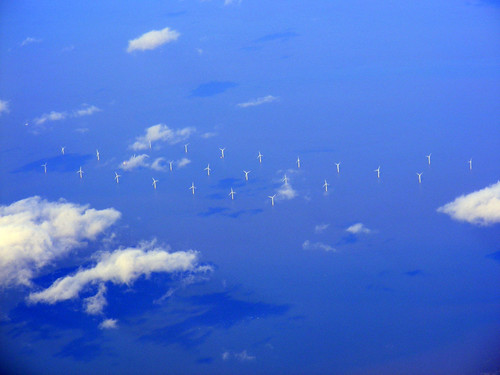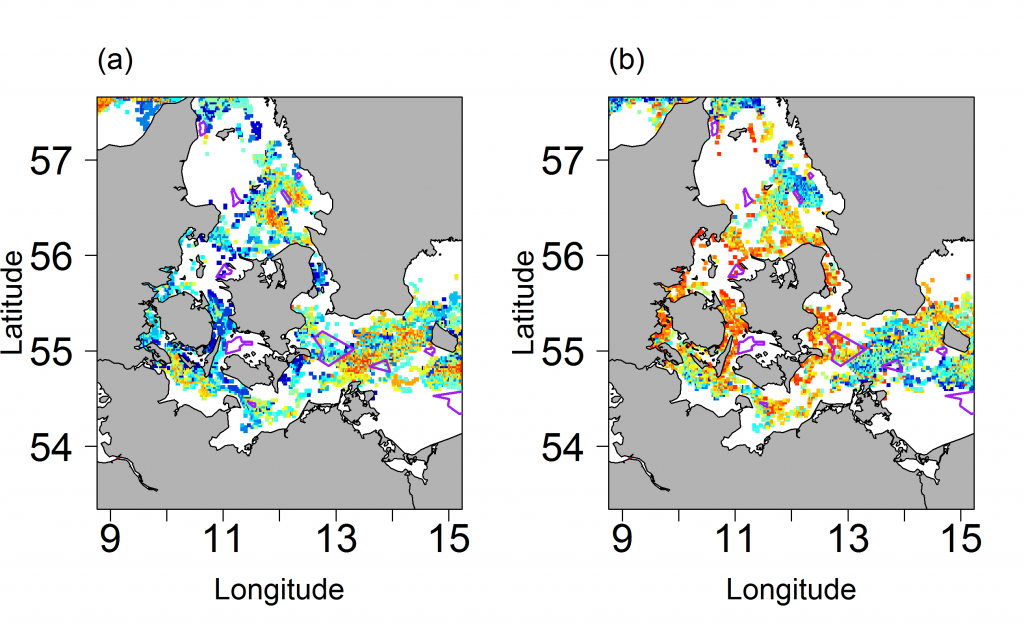 An on-going work is to apply and downscale the DISPLACE model to the commercially important and busy Western Baltic marine area where several utilisations of the sea currently coexist. In line with this it is evaluated to which extent the international plans for offshore windmill parks in the Baltic area are affecting the fishing opportunities per activity and fishing communities in the vicinity of the planned windmill sites.
An on-going work is to apply and downscale the DISPLACE model to the commercially important and busy Western Baltic marine area where several utilisations of the sea currently coexist. In line with this it is evaluated to which extent the international plans for offshore windmill parks in the Baltic area are affecting the fishing opportunities per activity and fishing communities in the vicinity of the planned windmill sites.
Hence, preliminary data mining shows that the planned offshore windmill parks in the area do not really interfere with important fishing grounds for the Danish fisheries. A notable exception is the large ‘Kriegers Flak’ site (where turbines will be shared between Denmark, Germany and ultimately, Sweden). A windmill farm here will impact important existing fishing grounds. Two indices of spatial use by the Danish vessels (>12m) visiting the Kattegat and the Baltic Sea in 2012, (a) revenue of the vessel visiting the cells over the total revenue, and (b) revenue realized on the cells by the visiting vessels over the total revenue of the same vessels. The gradient colour shows low (blue) up to high (red) index values. The planned (from 2013) windmill parks given in purple polygons (Source: compiled by DTU-Aqua)
Two indices of spatial use by the Danish vessels (>12m) visiting the Kattegat and the Baltic Sea in 2012, (a) revenue of the vessel visiting the cells over the total revenue, and (b) revenue realized on the cells by the visiting vessels over the total revenue of the same vessels. The gradient colour shows low (blue) up to high (red) index values. The planned (from 2013) windmill parks given in purple polygons (Source: compiled by DTU-Aqua)
Indices of activity (margin figure) reveal that this area is not really an important area in terms of total revenue at the scale of the entire Danish fisheries because not visited by “big players”. By contrast, the area is important for a large portion of vessels (likely conducting small-scale fisheries) which realize a significant portion of their total 2012 revenue in the designated area. Accordingly, it will impact many fishing businesses and the local societies. If this impact leads to major disruption of the fishing activities and/or major consequences on the population dynamics should be further investigated by modeling applying the DISPLACE model.
The evaluation intends to cover the implications in terms of individual profitability, and also in terms of the sustainability of the exploitation of the main commercial stocks in the area (i.e. sprat, herring, cod, and flatfish) and possibly the likely effect on the benthic communities from redirected bottom-disturbing activities. Integration of the Swedish and German vessels (also operating in the area) on top of the Danish ones is also planned to expand the impact evaluation.

